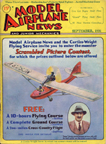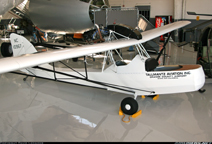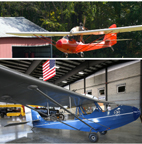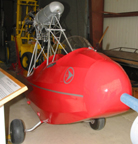September, 1931

Curtiss-Wright CW-1 "Junior"
Model Airplane News Cover Art for September, 1931
by Jo Kotula
Click to Enlarge
The Curtiss-Wright CW-1 Junior, originally named the Curtiss-Robertson CR-1 "Skeeter" was a light sports aircraft produced in the United States in the 1930s. Designed as a minimalist, affordable aircraft, the Junior was marketed as "built to sell for the price of an automobile in the medium price class". The airplane was featured on the cover of M.A.N. as part of a contest. The winner would learn to fly in this airplane. As we'll see below, this may have been a dangerous prize.



Curtiss-Wright CW-1 "Junior"
Click to Enlarge
Curtiss-Robertson's plans to produce such an aircraft were driven by the imminent arrival of the Aeronca C-2 and American Eagle Eaglet on the market. Hoping to compete in the same class, the company purchased the rights to the Snyder Buzzard but soon discovered that it simply could not be made to perform well enough. To replace it, the Skeeter was produced as an all-new design that retained the Buzzard's basic configuration. The aircraft featured a fuselage of square cross-section made from steel tube and covered in fabric. The top of the fuselage was left open, to create an open cockpit for the pilot and a passenger sitting in tandem. The tiny pusher engine was mounted atop a parasol wing and fixed tailwheel.
By the time the aircraft was ready to market in 1931, Curtiss-Robertson's parent company, Curtiss, had merged into Curtiss-Wright, and the Skeeter was awarded the new designation and name CW-1 Junior. Sales were brisk through 1931, with some 270 aircraft sold at $1,490 each, but the success did not last long. The pusher propeller arrangement was the source of two serious problems. First, the engine had a noted tendency to throw cylinders. In the pusher design, this resulted in the cylinder passing through the propeller. Junior owners solved this problem by wrapping a steel cable around the engine so that any thrown cylinder would stay in place until the aircraft was safely on the ground. The second problem was not so easily solved. The Junior's low stance on the ground and the presence of a propeller in a position where people were not used to finding one led to a number of accidents where people on the ground (particularly passengers disembarking the aircraft) simply walked into the spinning propeller. These issues, combined with a highly-publicised fatal crash, spelled the end of the Junior's marketability. By early 1932, sales had virtually stopped, and Curtiss-Wright's head office decided to end production.
Click Here for more information about the Curtiss-Wright CW-1 "Junior".

Click to go back and select another cover.
Counter for the Entire Site (not just this page..)
Home | About Lindy | Last Week's Reviews | Upcoming Events | 1940s Collecibles
The Guide - Establishments - Travel - Accessories
Music | Links | Photo Gallery | Extras | Contact